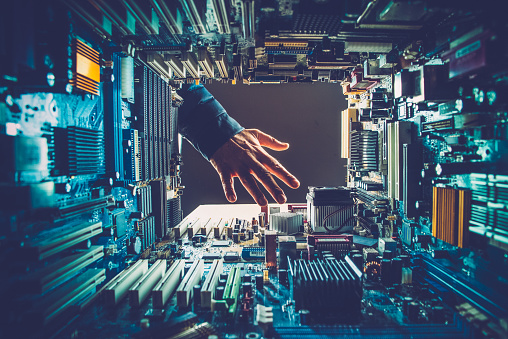The Evolution of Artificial Intelligence: Unleashing the Power
In the ever-evolving landscape of technology, artificial intelligence (AI) stands as a beacon of innovation, transforming industries and reshaping the way we interact with the world. One of the most remarkable advancements in AI is the development of the GPT (Generative Pre-trained Transformer) series, with GPT-3 leaving an indelible mark on the tech landscape. As we look forward, the anticipation surrounding GPT-4 and the potential it holds for the future is palpable.
I. The Rise of GPT-3:
GPT-3, the third iteration of OpenAI’s GPT series, made waves when it was unveiled in June 2020. Boasting a staggering 175 billion parameters, GPT-3 demonstrated unprecedented language understanding and generation capabilities. Its ability to perform a myriad of tasks, from natural language processing to code generation, marked a paradigm shift in the AI domain.
A. Language Understanding at Scale:
GPT-3’s colossal parameter count allowed it to comprehend and generate human-like text with remarkable fluency. The model could not only understand context but also generate coherent and contextually relevant responses, leading to its widespread adoption in various applications, including chatbots, content creation, and even creative writing.
B. Applications Across Industries:
The versatility of GPT-3 extended beyond conventional uses. Developers and businesses explored novel applications, such as automated content creation, virtual assistance, and personalized learning experiences. GPT-3’s impact on industries like healthcare, finance, and marketing underscored its potential to revolutionize traditional workflows.
II. The Limitations of GPT-3:
While GPT-3 showcased the immense potential of large-scale language models, it also brought attention to certain limitations. Issues like biased outputs, the generation of inaccurate information, and the model’s inability to fully comprehend context in certain situations prompted researchers to seek improvements for the next iteration.
A. Addressing Bias and Ethical Considerations:
As AI systems become integral to decision-making processes, the issue of bias in outputs became a critical concern. Researchers and engineers focused on refining training data, implementing fairness measures, and developing ethical guidelines to ensure that AI systems, including GPT-4, would prioritize unbiased and responsible outcomes.
B. Enhancing Contextual Understanding:
Improving contextual understanding emerged as a key area for thetechmagazines.com. GPT-4 aims to surpass its predecessor by better grasping nuanced context, reducing instances of generating incorrect or nonsensical information, and enhancing its ability to engage in more meaningful and coherent conversations.
III. GPT-4: Unleashing the Next Wave of AI Innovation:
The forthcoming GPT-4 promises to build on the successes of its predecessors while addressing their limitations. As the tech community eagerly awaits its release, key expectations and potential breakthroughs are being discussed.
A. Unprecedented Parameter Count:
GPT-4 is expected to push the boundaries of AI with an even larger parameter count. The implications of such a leap in scale are profound, as it could result in significantly enhanced language understanding, improved contextual awareness, and the ability to tackle more complex tasks.
B. Enhanced Contextualization and Adaptability:
The focus on contextualization is expected to be a major highlight of GPT-4. Through advanced training techniques and refined algorithms, the model aims to exhibit a deeper understanding of context, enabling it to generate more accurate, relevant, and context-aware responses across diverse scenarios.
C. Continued Ethical Advancements:
Addressing ethical considerations remains a priority for GPT-4. OpenAI continues to invest in research and development aimed at mitigating bias, ensuring fairness, and promoting responsible AI usage. Transparent and inclusive approaches to model development and deployment are expected to be key pillars of GPT-4’s design.
IV. The Future Impact:
As GPT-4 prepares to enter the AI arena, its potential impact on industries, society, and the global economy is a topic of intense speculation.
A. Industry Disruption and Innovation:
GPT-4’s enhanced capabilities are poised to disrupt industries by streamlining workflows, automating complex tasks, and fostering innovation. Sectors such as healthcare, finance, and education are likely to witness transformative changes as businesses incorporate GPT-4 into their operations.
B. Human-Machine Collaboration:
The evolution of AI, particularly with models like GPT-4, prompts a reevaluation of the human-machine relationship. Increased collaboration between humans and AI is anticipated, with AI serving as a powerful tool to augment human capabilities rather than replace them. The potential for creative collaboration in fields like content creation, research, and problem-solving is vast.

Post Comment